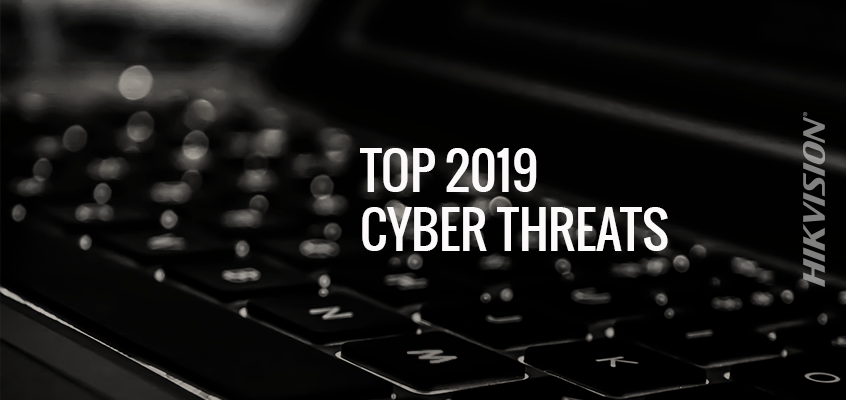Global Security Firm Outlines Biggest 2019 Cyber Threats
Hikvision Outlines Tips to Prevent Malware, Reduce Vulnerabilities
In Security magazine, global security advisory firm, The Chertoff Group, outlined some of the largest anticipated cybersecurity risks for next year, as well as cyber market and policy trends in the article, “The Biggest Cyber Threats to Watch Out for in 2019.”
Top 2019 Cyber Threats
The top three 2019 cyber threats include different types of malware, including cryptojacking and software subversion, as well as a rise in attacks within the cryptocurrency ecosystem.
According to the article, cryptojacking is also known as “cryptomining malware” aimed at gaining a profit for hackers. This form of malware runs in the background of endpoints, mobile devices and servers, and is easy to deploy, making it a cyber threat that is expected to increase into 2019.
Software subversion is a type of malware that seeks to exploit the software development processes. “For example, developers are in some cases specifically targeted for attack. Malware has also been detected in certain open source software libraries. As software code becomes more complex and dynamic, the opportunities for corruption increase as well,” said the article.
As the use of cryptocurrency becomes more prevalent, cyberattacks in this realm are also expected to increase.
Cyber Policy Trends
There are several cyber policy trends referenced in the article, including data privacy and security legislation, cyber threats related to the 2020 U.S. elections, as well as SEC and related incident disclosure changes.
An increase in security breaches plus the GDPR and the California Consumer Privacy Act implementation is expected to increase legislation regarding data security and privacy. In addition, the “SEC released updated guidance on public company cybersecurity disclosure requirements under Federal securities laws. The guidance focuses on two topics: (1) the importance of maintaining comprehensive cyber policies and procedures, particularly on timely disclosure of material cyber risks and incidents, and (2) the application of insider trading prohibitions to material cybersecurity risks and incidents,” according to the article.
Another trend is the U.S. government’s Vulnerabilities Equities Process (VEP), which guides how it should handle a security vulnerability.
Cyber Market Trends
The article concludes by outlining current cybersecurity market trends: a move toward products and services that can emulate actual threats and subsequently recommend mitigation strategies, are expected to rise in 2019.
In addition, 2019 will see a continued migration to cloud-based security applications, as well as greater use of mobile devices for biometrics and other security applications.
Customers will expect effective cybersecurity measures from the companies they interact with and do business with.
To read the entire article, click here.
Hikvision Outlines Tips to Prevent Malware, Reduce Vulnerabilities
Hikvision has written numerous blogs over the last year on numerous cybersecurity topics. This includes a recent post that offers tips to prevent malware attacks and reduce system vulnerabilities. In the article, Hikvision’s cybersecurity director, Chuck Davis, said: “Two of the most prevalent attack methods are, network scanning and phishing. A typical network scanning attack occurs when a system scans a network (frequently the Internet) looking for vulnerable systems. When it finds one, it will exploit the vulnerability and infect the system with malware.”
The blog provides the following tips to improve cybersecurity:
- Use firewalls and firebreaks (network segmentation)
- Protect your computer from vulnerabilities
- Reset default passwords and use complex passwords
- Manage your router
- Run active scans and updates
For additional details, click here to read the whole article on the Hikvision website.

